Life Sciences Domain: Allied Market Research’s Top 5 Emerging Markets in Q2 2024

The life sciences domain has been one of the best-performing sectors in the global economy for the past few decades. Heavy investments in research and development activities have opened new avenues of growth in the last few years. Furthermore, the epidemics and pandemics that broke out since the 1990s played an important role in the expansion of this sector. Especially, the Covid-19 pandemic resulted in massive growth in the domain as public and private companies funded new projects and initiatives for developing novel drugs and vaccines.
While studying all the factors responsible for the growth of the life sciences domain, Allied Market Research has identified five markets that have contributed significantly to the rise of this sector in Q2 2024. Each of these five industries is comprehensively covered in their respective research reports. By deploying an in-house ‘Title Matrix Tool’, research analysts from AMR have studied the different facets of these five landscapes including their CAGR values, revenue numbers, growth opportunities, and latest developments which are responsible for the evolution of this domain. The futuristic outlook offered in these reports helps companies develop a clear understanding of the nature of the domain.
Vaccines Market
The vaccines market accounted for $43.2 billion in 2023 and is expected to gather a revenue of $90.7 billion by 2035, thus growing at a CAGR of 6.4% in the 2024-2035 period. The AMR report highlights that the immunization programs kickstarted in several countries for their citizens are expected to create favorable growth conditions for the industry. Also, the rising prevalence of infectious diseases globally has led to a surge in demand for various vaccines which is estimated to amplify the scope of this landscape. The AMR report provides a detailed segmental analysis of the vaccines market on the lines of technology type, indication, and end user.
By technology type, the recombinant and conjugate vaccines segment is predicted to have the highest growth rate during 2024-2035. The rising incidence of infectious diseases such as pneumococcal disease, hepatitis B, meningococcal disease, human papillomavirus (HPV), etc., is anticipated to help the segment flourish in the coming period. The AMR report also provides deep insights into the competitive scenario of the industry by highlighting the performance of leading companies such as Bharat Biotech, GlaxoSmithKline Plc., Pfizer, Emergent Bio Solutions Inc., etc.
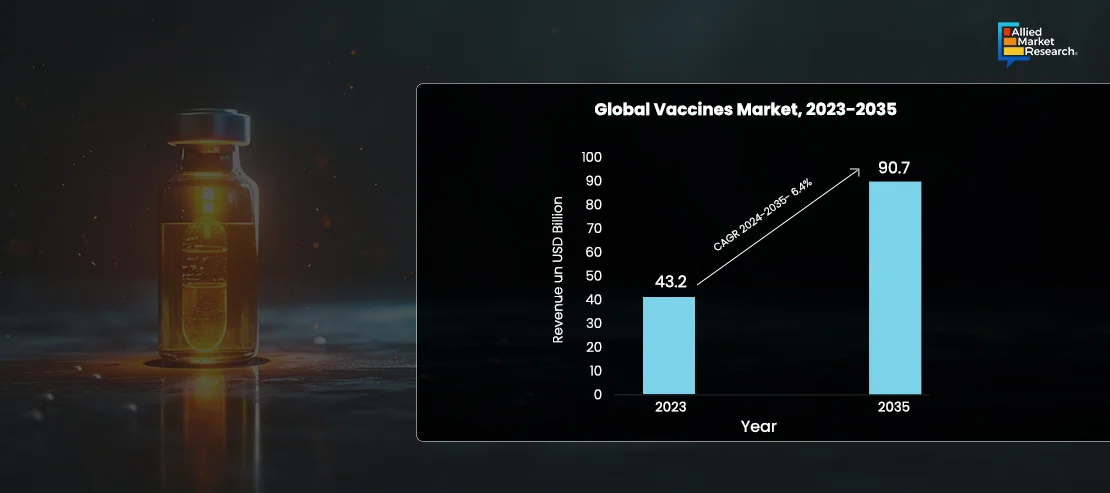
Radiopharmaceuticals Market
Radiopharmaceuticals, as the name suggests, are pharmaceutical drugs that contain radioactive isotopes and are widely used for diagnostic and therapeutic purposes. Calcium-47, Carbon-11, Chromium-51, Fluorine-18, etc., are some of the most used radioisotopes for manufacturing different kinds of radiopharmaceuticals. In the past few years, with extensive research in medical sciences, innovations like single photon emission computed tomography (SPECT) and positron emission tomography (PET) have widened the scope of the radiopharmaceutical industry. The growing use of therapeutic applications in areas of cancer treatment has also played a major role in the rise of this landscape in Q2 2024. Owing to these factors, the radiopharmaceuticals market, which accounted for $7.9 billion in 2023, is predicted to gather a revenue of $21.8 billion by 2033, thereby surging ahead at a CAGR of 10.6% in the 2024-2033 period.
The AMR report also highlights the performance of the landscape in different regions across the globe including North America, Europe, Asia-Pacific, and LAMEA. Countries such as the US, Canada, the UK, Germany, France, India, China, Japan, etc., are studied extensively as part of this regional analysis. As per the report, the North America region accounted for the highest revenue share and is projected to remain dominant in the coming period. The advanced and well-developed medical infrastructure is expected to augment the growth rate of the market in this province in the years to come.
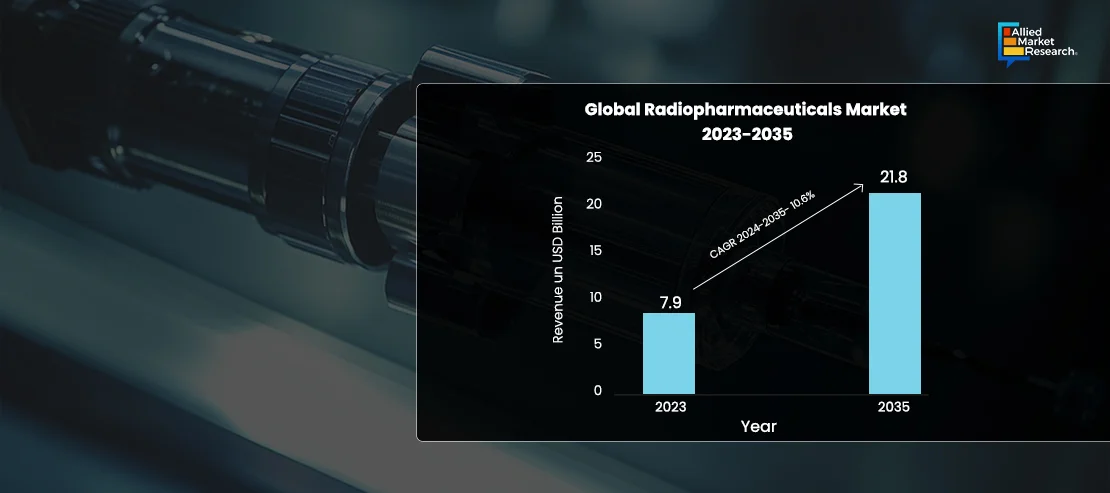
Proteomics Market
Proteomics is an emerging field in biology that focuses on the composition, structure, function, and interaction of proteins with different cellular activities. The field has become extremely important in contemporary medical science as it has helped doctors and healthcare professionals to identify various candidate biomarkers, bacterial antigens, and immunohistochemistry factors causing different ailments. Hence, today, proteomics is widely used in personalized medicine development, drug discovery, astrobiology, allergen detection, etc. As per the AMR report, this growing applicability of proteomics in different medical sciences and healthcare-related research activities is expected to help the proteomics market amass a revenue of $161.9 billion by 2035 and rise at a CAGR of 14.2% in the 2024-2035 period.
Among all these applications, the drug discovery component is predicted to benefit the most due to advancements in the field of proteomics. The report highlights that medical researchers are using insights gained from studying proteomics to identify specific proteins and develop targeted medical therapies. As a result, the drug discovery segment is estimated to have the most dominant revenue share in the second quarter of 2024. Apart from the segmental analysis, the report also profiles some of the major companies in the industry such as Li-Cor Inc., Bio-Rad Laboratories Inc., Thermo Fisher Scientific Inc., etc., and studies their performance and strategies to help businesses gain a competitive edge over their peers.
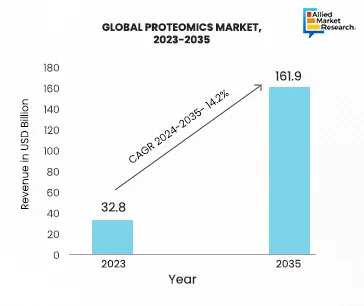
Next Generation Sequencing Market
The next generation sequencing market, as per the Allied Market Research report, is predicted to reach $97.8 billion by 2035. The industry was valued at $13 billion in 2023 and is anticipated to grow at a CAGR of 18.3% during the 2024-2035 period. The report suggests that the rising incidence of different kinds of genetic disorders and cancer across the globe is estimated to expand the scope of the landscape in Q2 2024. Next generation sequencing includes techniques for DNA and RNA sequencing to enhance throughput, speed, and scalability in genomic research. In the recent past, several innovations and advancements have taken place in the field of genetic engineering which is projected to develop new avenues of growth in the industry.
The AMR report, to help investors and businesses focus on the key areas, classifies the landscape into various segments on the lines of product, application, technology, and end user. Each of these segments and their corresponding sub-segments is thoroughly studied in these reports with special emphasis on the factors influencing their growth. For instance, based on technology, the sequencing by synthesis (SBS) segment of the next generation sequencing market is expected to have the fastest CAGR of 17.9% in the 2024-2035 period. The ability of this technology to generate high-quality sequencing data at scale has widened the applicability of the technology in Q2 2024 and will aid the industry to augment its growth rate in near future.
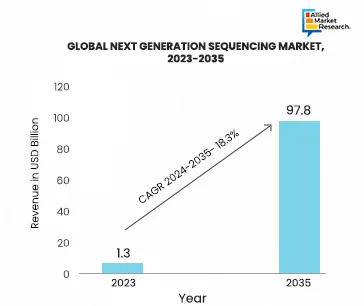
Pharmaceutical Packaging Market
The primary aim behind pharmaceutical packaging is to prevent the drugs from getting contaminated due to external factors like dust, microbes, moisture, etc. Over the years, several types of pharmaceutical packaging materials have been designed for different pharmaceutical drugs, tablets, and syrups which ensure their stability, safety, and integrity. Furthermore, new manufacturing techniques have also been developed to produce green packaging materials for addressing concerns related to environmental sustainability. As per the AMR report on the pharmaceutical packaging market, the industry is expected to rise at a CAGR of 6.3% in the 2024-2035 period and gather a revenue of $233.3 billion by 2035.
Along with the global study of the market, the report also dwells on its performance in all the regions around the world including Asia-Pacific, LAMEA, North America, and Europe. As part of this regional analysis, the socioeconomic, cultural, demographic, and technological factors are studied thoroughly in the major countries of these provinces. The companies operating in these countries are also studied to enable businesses to gain insights into the competitive scenario of the industry. In the case of the pharmaceutical packaging landscape, the Asia-Pacific province is projected to record the highest growth rate in the coming period owing to the rising demand for different medications, rapid industrialization, and the expansion of the pharmaceutical sector.
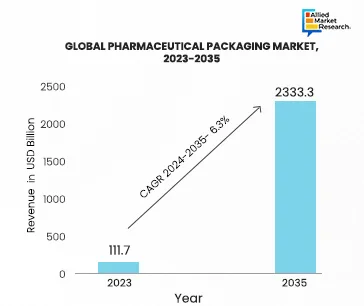
A Holistic Study of the Life Sciences Domain
The main purpose of Allied Market Research behind publishing this list of top five emerging markets in the life sciences domain is to aid businesses realize the transformative nature of the sector and understand the structural changes it has undergone. Furthermore, it also helps new companies in the sector to make ambitious yet realistic plans and implement the solutions given in the report to achieve their fullest potential. For instance, the report on the pharmaceutical packaging industry suggests companies adopt green manufacturing practices to establish their dominance in the years to come. Similarly, it recommends vaccine manufacturers invest in the recombinant and conjugate vaccines segment to maximize their profit share in the 2024-2035 period.
The Final Word
The AMR reports, to summarize, offer insights into the investment opportunities in these landscapes. Additionally, the market restraints elaborated in each of these five reports highlight the pathways that businesses should avoid minimizing the losses caused by negative factors impacting the industry. AMR conducts various surveys and interviews involving major stakeholders in these industries to provide accurate and precise statistics and data points.



